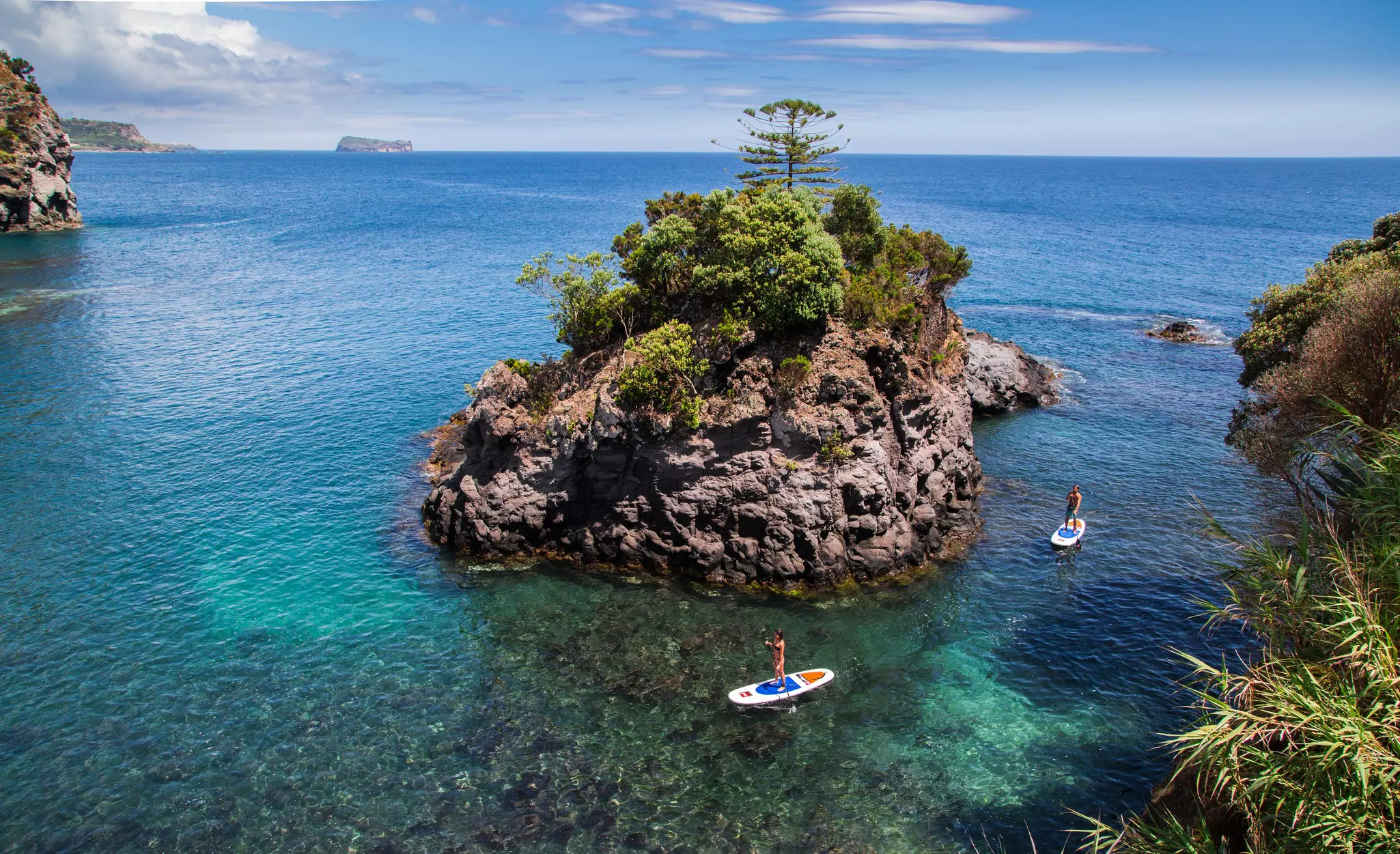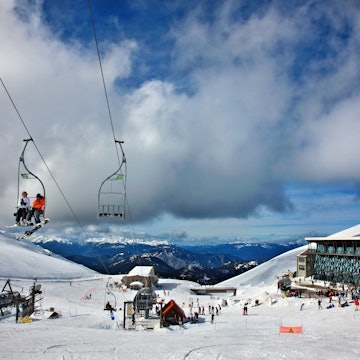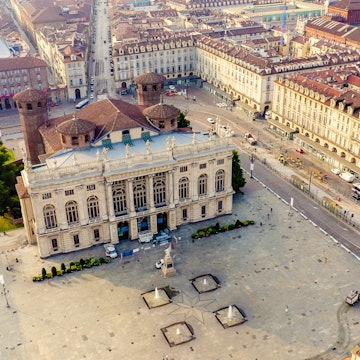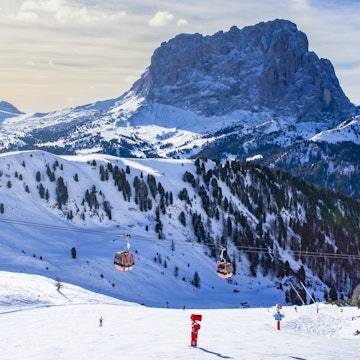

Hikers reflected in Lac Blanc on France's Tour du Mont Blanc trail. Alex Treadway/Getty Images
From soaring alpine peaks to billowing lavender fields and azure rivers corkscrewing down into deep canyons, France has a trail to match every mood, moment and ability.
Our favorite French hikes take in everything from cloud-grazing peaks to Provence’s drowsy, sun-kissed countryside and the wave-hammered beaches of the Basque Country. It’s time to sling on your hiking boots and hit the trails.

1. Sentier du Littoral, French Basque Country
Best coastal day hike
25km (15.5 miles), 5–6 hours, easy
Tumbling Atlantic waves, rocky coves, countryside blanketed in maquis (scrub), and fishing villages snuggled below high cliffs provide a coastal stunner of a day hike in the French Basque Country. Forging a path between the Pyrenees and the Bay of Biscay, the Sentier du Littoral delivers one heart-lifting coastal view after another as it strides from Bidart to Hendaye via St-Jean de Luz.
Highlights are plentiful: the views of the Bay of Biscay from Colline de Cenitz, the cheerful seaside buzz of St-Jean de Luz, Socoa’s chunky 17th-century fort and the dramatic cliffs of the Corniche. Follow the trail north to south for arresting sights of the Jaizkibel mountain range, the granite crown of Les Trois Couronnes and the 905m (2969ft) peak of La Rhune, topped by Neolithic dolmens and stone circles.
Planning tip: Technically, the hike is a breeze, but, in summer in particular, pack plenty of sunscreen and water, and aim to walk in the early morning or late afternoon.

2. Chemin de Stevenson, Cévennes
Best hike for rural romance
270km (169 miles), 2 weeks, moderate
A love letter to Scottish author Robert Louis Stevenson, who trekked across the Cévennes in 1878 with his stubborn donkey Modestine, this hike is one of France’s most classic and captivating. Read about the journey beforehand from Stevenson himself in Travels with a Donkey in the Cévennes.
The route is the rural French dream, running from the forests of the Cévennes across the ragged granite Mont Lozère massif into the rolling farmland and valleys of Gévaudan and Velay. Hikers weave from Le Puy-en-Velay to Alès through forested ravines and rolling cornfields, passing ruined châteaux and stone-built hamlets, and crossing sunbaked hillsides to the soundtrack of cicadas and cowbells.
Fiery sunsets give way to nights spent camping or sleeping at simple rural gîtes (self-catering cottages) as the scenery builds like a drumroll, saving the best for last – the UNESCO-listed Parc National des Cévennes, bristling with beech, oak and sweet chestnut woods and scored by gorges, cliffs and rivers. This spectacularly biodiverse park is home to beavers, otters, roe deer and golden eagles.
Planning tip: Several ridge ascents turn what would otherwise be a gentle walk into a more challenging hike, so come prepared. Hiking the full route takes around two weeks, or you can tackle one of the individual sections.

3. Lac Blanc, Chamonix
Best mountain hike
11km (7 miles), 5–6 hours, challenging
If you’re the kind of hiker who thinks it’s cheating to stand eye to eye with one of Europe’s most impressive mountains without breaking a sweat or getting a blister, this hike from Argentière near Chamonix to jewel-like Lac Blanc in the French Alps is for you.
It’s all uphill from the starting point in Tré-le-Champ in Argentière, with more than 1000m (3280ft) of rocky and rugged ascents to negotiate, and a few dizzying fixed ladders to climb. But it’s well worth it: the Lacs des Chéserys are a tantalizing prelude for sapphire-blue Lac Blanc, with its out-of-this-world view of 4808m (15,774ft) Mont Blanc and the Aiguille du Midi.
Wildlife thrives at these craggy heights, so keep a look out for mouflon, golden eagles and ibex. The icing on the cake is getting to eat at – or even better, stay the night at – the Refuge du Lac Blanc, perched at 2352m (7717ft). You’ll need a head for heights, a decent level of fitness and good timing for this one, as it’s proper Alpine terrain.
Planning tip: The trail is only accessible from the second half of June through to September; before or after that, as the name – White Lake – suggests, you’ll have snow to contend with.

4. GR20, Corsica
Best hike for the sheer challenge
180km (112 miles), 2 weeks, challenging
Of the many thousands of miles of sentiers (hiking trails) spidering across France, the trek hailed as the most epic is the GR20 in Corsica. This two-week, into-the-wild, no-holds-barred, knee-crunching monster sends a shiver down the spine of even the most experienced hiker. Perhaps the most surprising thing is that this beast of a hike exists on a Mediterranean island where many flock to chill on the beach.
But it’s a beauty, too. Traversing the island from Calenzana to Conca, north of Porto Vecchio, it delivers non-stop drama, from deep ravines to glacial lakes, granite crags to wind-battered craters, peat bogs to snowy peaks and plains to forests.
This is one of Europe’s toughest trails, and the terrain is hardcore, with plenty of steep climbs, exposed scrambles and slippery crossings. The whole route takes two weeks; it may well break both your back and soul, but you’ll be raving about it forever.
Planning tip: Some preparation is required as you’ll be drawing water from springs and sleeping in refuges (mountain huts). Note that wild camping is officially not permitted, but people may casually turn a blind eye if you’re discreet and gone by sunrise.
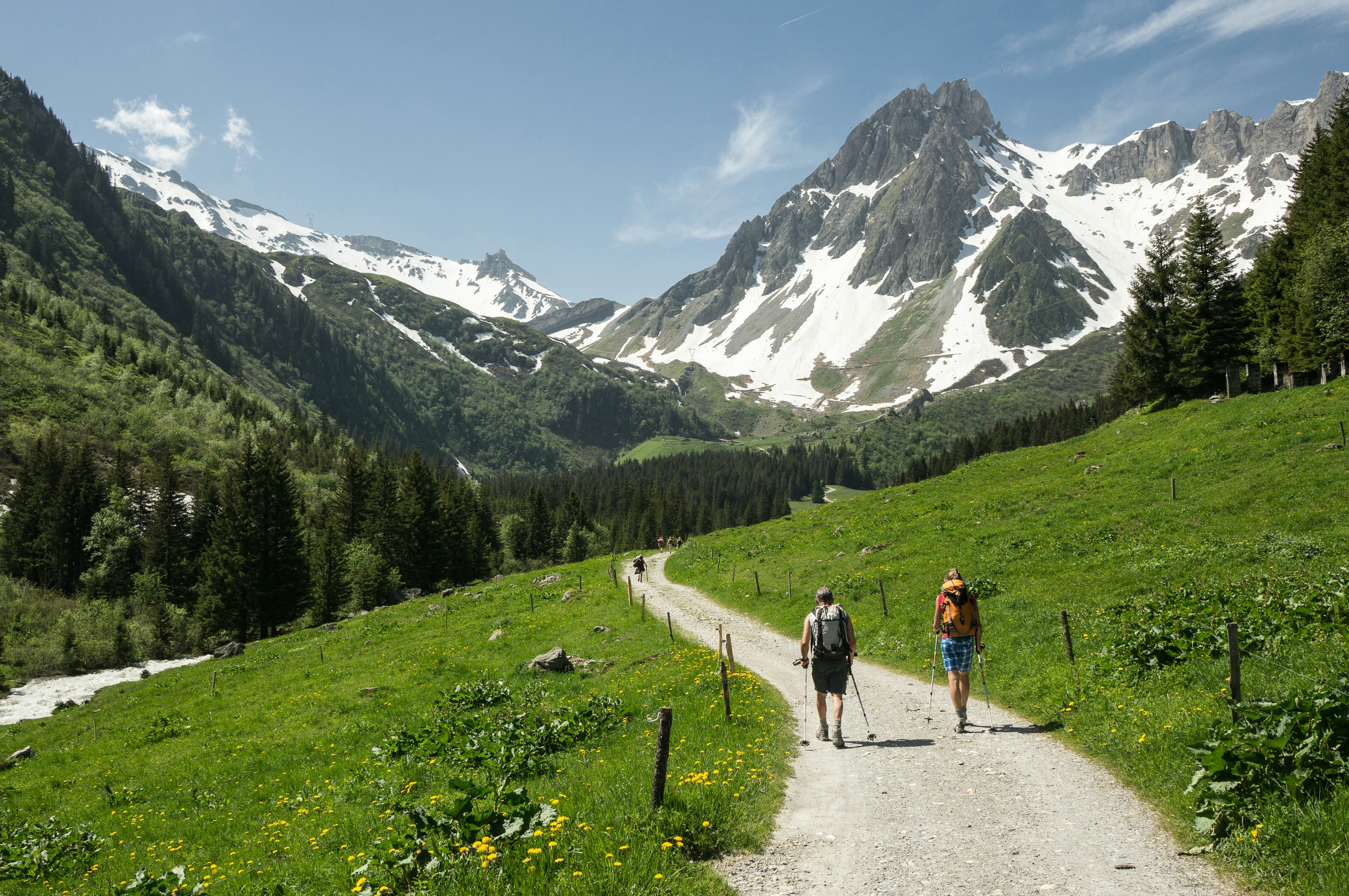
5. Tour du Mont Blanc, France, Switzerland, Italy
Best long-distance hike
180km (112 miles), 10–14 Days, moderate to challenging
The hugely popular Tour du Mont Blanc whisks you through some of the most jaw-dropping scenery in France, Switzerland and Italy as it circumnavigates the gnarly, snow-polished peaks of the Mont Blanc massif. A test of grit and stamina, the trail twists up to sky-high passes, grazes glaciers and wild rivers, and plunges hikers into remote valleys and meadows bursting with wildflowers.
Nights spent camping under starry skies or digging into a warm meal at a rustic mountainside hut. You'll also relish peachy sunrises and sunsets, and the chance to glimpse altitude-loving wildlife such as marmots, chamois and ibex.
The tour is accessible from late June to early September, but do come prepared for wild weather at all times; conditions can change at the drop of a hat. There’s no need for technical gear (crampons, ropes, etc), but bring warm layers, waterproofs and solid boots.
Planning tip: Starting and finishing in Les Houches near Chamonix, the trail is best hiked clockwise to acclimatize for the tougher climbs towards the end. Planning is essential as the mountain huts get booked out months ahead.

6. Sentier des Ocres, Roussillon
Best hike in Provence for families
1.5km (0.9 miles), 1 hour, easy
With its spectacularly eroded rock formations, blushing a color chart of reds from dusky pink to rusty terracotta, this canyon in Roussillon in the Luberon in Provence feels more like the American Wild West, especially beneath a pure blue sky.
This former quarry was once for ocher mining, but today it is the cinematic backdrop for a short but astonishingly lovely circular trail, which weaves through a desert-like landscape of cliffs and ridges and groves of chestnut and pine. This is a brilliant short, gentle hike for families and has information panels on local plants and wildlife.
Planning tip: Wear solid walking shoes and dark clothes as you'll get pretty dusty. Walk the route from mid-February to December.
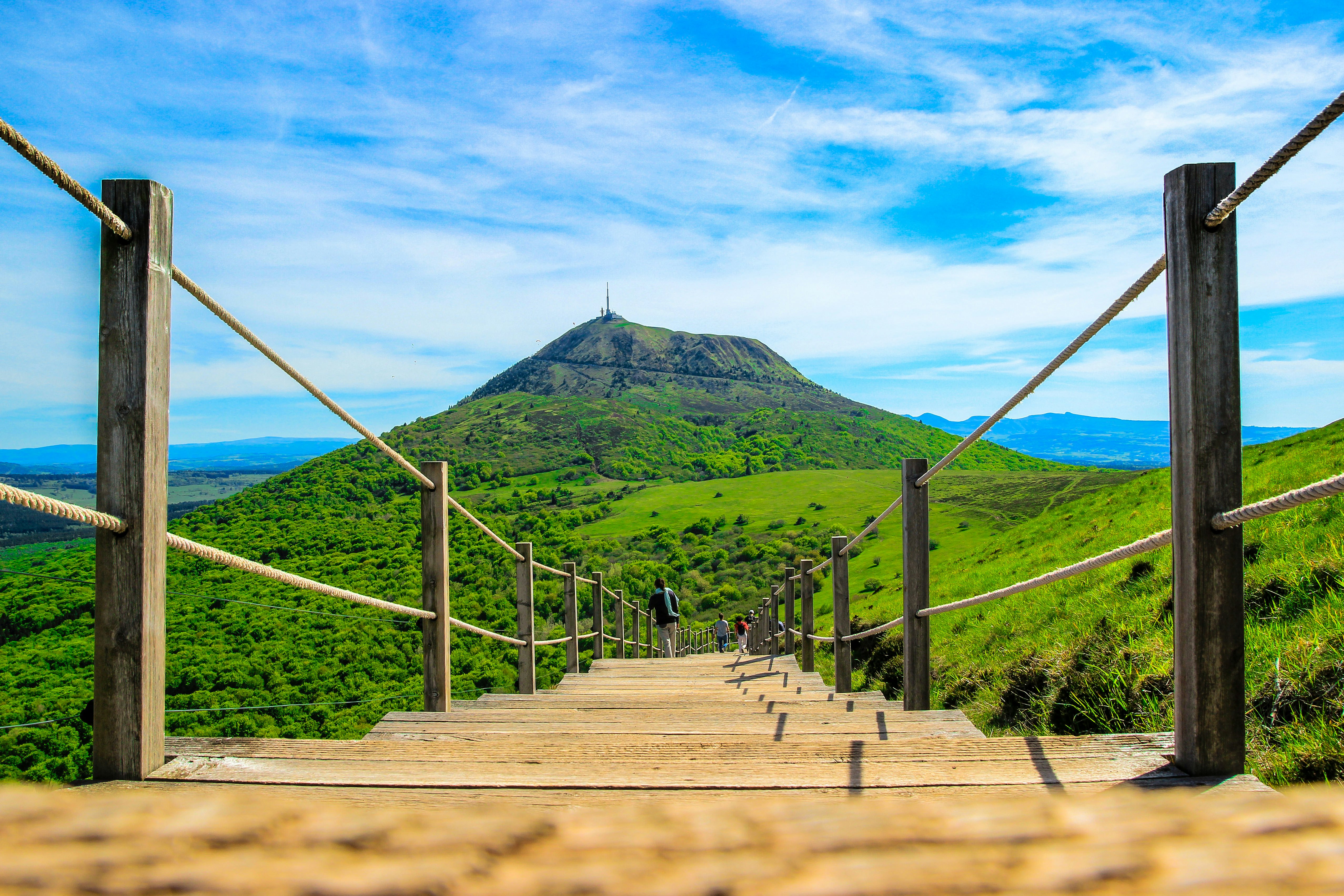
7. Puy de Dôme, Massif Central
Best volcano hike
6km (3.7 miles), 1½ hours, moderate
The area that makes up France’s midriff remains sorely overlooked by hikers, but Auvergne’s long-extinct volcanoes are a geological and visual treat. These ancient mounds that last blew their top more than 7000 years ago still crumple the landscape, while green blanketed countryside gives way to granite plateaus and glacier-sculpted valleys.
Find here the vast Parc Naturel Régional des Volcans d'Auvergne, and within it the UNESCO World Heritage-listed Chaîne des Puys, a 40km (25-mile) string of cinder cones and lava domes. The showstopper is 1465m (4806ft) Puy de Dôme.
Many will jump on the rack railway to reach the top, leaving keen hikers to enjoy the peace of the Chemin de Muletiers: a short, steep old mule trail that hoists its way up wooden steps and along wildflower-fringed paths to the summit. This trail has been hiked for millennia, as pilgrims once used it to reach the Gallo-Roman Temple de Mercure that now lies in ruins at the top.
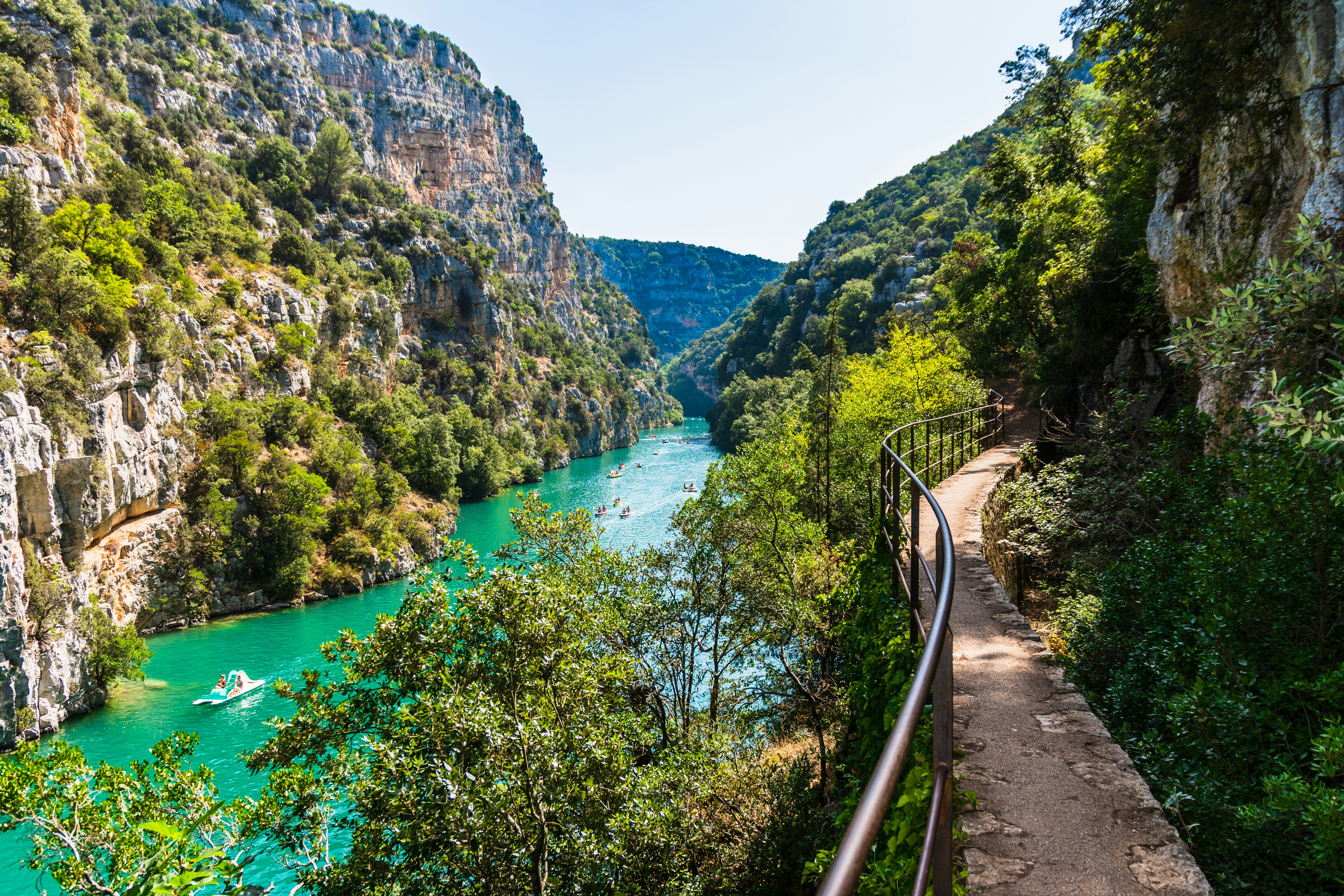
8. Blanc-Martel Trail, Gorges du Verdon
Best canyon hike
16km (10 miles), 6–7 hours, moderate
One of France’s most stirring natural wonders is the Gorges du Verdon, where limestone cliffs razor above the startlingly turquoise Verdon River as it carves its way through the plateau to the Alps. In the shadows and hush of early morning, the canyon is utterly peaceful, enclosed by walls of rock reaching up to 700m (2297ft). Yet listen carefully, and you may hear the screech of a golden eagle wheeling overhead.
The canyon can be admired from many viewpoints and picnic spots, but the way to truly get the measure of Verdon is to hike the Blanc-Martel Trail, which twists and turns through the gorge and down to the river. Later, the route sneaks along trails scored into the high canyon walls, occasionally dipping into a tunnel, traversing a bridge or teetering up a flight of wooden steps. It’s a proper day-long adventure, with the odd steep descent and ascent thrown into the mix.
Planning tip: As the hike is point-to-point, you’ll need to think about transport. The best option is to start your walk at Chalet de la Maline in La Palud-sur-Verdon and end at Point Sublime, where you can take a shuttle bus back to the trailhead. The gorge gets as hot as an oven in summer, so get a nice early start and bring plenty of sunscreen, snacks, water and a head torch for the tunnel.

Tips for hiking in France
No permit is needed to hike in France, and trails are generally well-maintained and signposted.
It can be worth enlisting a guide for tough hikes and summit ascents in the French Alps.
In mountainous regions like the French Alps and Pyrenees, lifts and cable cars operate in summer (from around mid-June to August), whisking hikers to higher altitudes.
If you’re up for an epic, multiday hike, look out for the sentiers de grande randonnée (GR trails), long-distance paths marked by red-and-white-striped indicators.
Never take the weather for granted, especially at high elevations, and always check the forecast on Metéo France before heading out.
IGN is a reliable source of topographic maps and guides.


